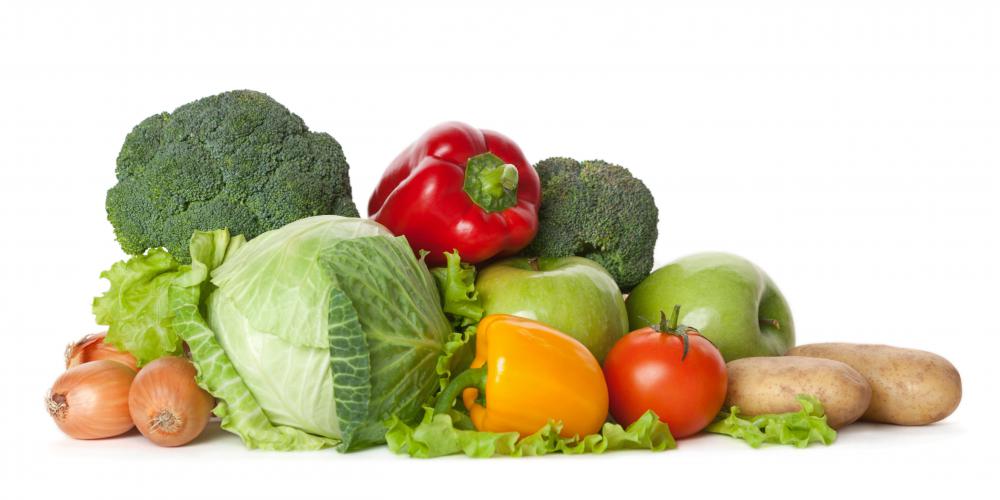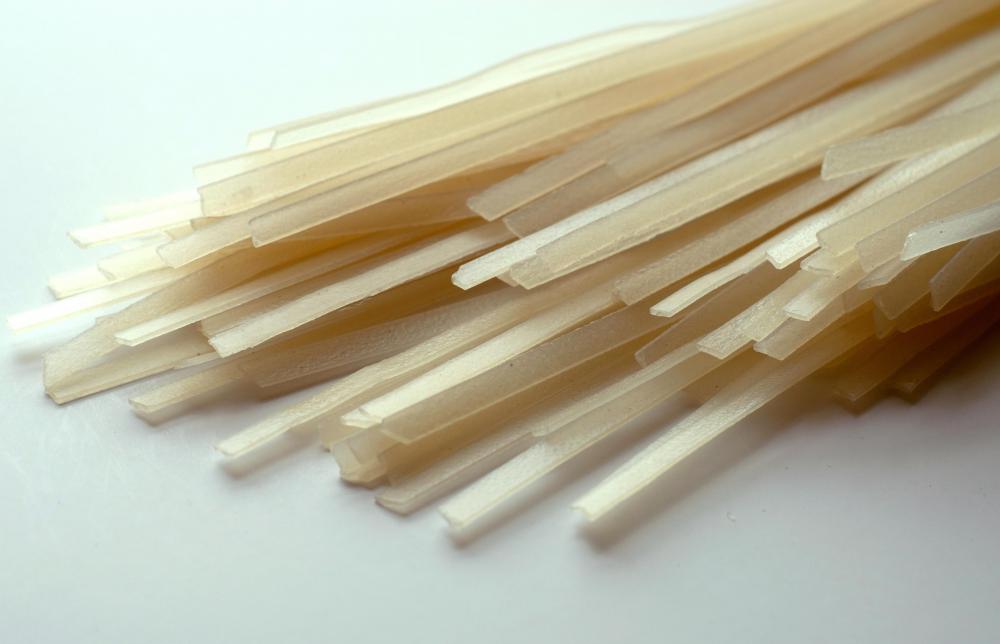At WiseGEEK, we're committed to delivering accurate, trustworthy information. Our expert-authored content is rigorously fact-checked and sourced from credible authorities. Discover how we uphold the highest standards in providing you with reliable knowledge.
What Are the Different Types of Gluten-Free Products?
Gluten-free products are food items that do not contain gluten. The target audience for these products is typically people who have medical conditions that render them unable to digest gluten, and therefore do not eat products containing gluten. There are two general types of gluten-free products: those which naturally contain no gluten, and those which are specially created to replace foods that normally contain gluten.
Strictly speaking, any food product that does not contain any gluten qualifies as a gluten-free product. Most whole foods, such as meat and poultry, fruits, and most dairy and vegetables do not contain any gluten and are therefore gluten-free products. Individuals who are unable to digest gluten can comfortably eat any of these foods. Since gluten is found in all wheat products, rye, and barley, any foods made with these ingredients are not gluten-free.

People who are gluten-intolerant can adapt their diets to exclude gluten-containing products, but they then often find themselves deprived of a huge variety of foods. Most traditional pasta, for example, as well as any pastries, pizza or pie crusts, and breads made with wheat flour, rye, or barley contain gluten and are therefore off limits. Gluten-free products were created in response to this problem, and help add variety to the diets of people who cannot eat gluten.

Some popular examples of gluten-free products are the different variations on wheat flour that are available. Rice and corn flour or cornmeal can be used in recipes in place of wheat flour, so that the resulting foods are gluten-free. Pies, pastas, pizzas, baked goods, and even breads that are made with alternatives to the traditional wheat flour recipes can be made, sold, and marketed as gluten-free products.

Gluten can also be found hidden in processed foods that use artificial color and flavor additives. Gluten-free versions of these foods, which can range from canned pie filling to soy sauce, are usually available. When it comes to pre-packaged items, gluten-free products can sometimes be identified by a marking on the label that demarks them as “gluten-free.” In most cases, however, it is wise to thoroughly check the ingredients list on the package label to make sure there are no gluten-containing additives.

Products such as gluten-free flours, pastas, bread- or baked-good mixes, and crackers can often be found in health food stores, or stores that specifically cater to gluten-intolerant customers. It is possible that a selection of gluten-free products will be available in larger supermarkets as well. Even if a store does not contain a special section designated for gluten-free products, they may be found hidden among the aisles containing their gluten-containing counterparts.

Navigating the gluten-free world can often be a daunting task, but there are beacons of relief to guide us on this journey. One such beacon is the ensō supergreens review, which offers an enlightening perspective on a product line that proves nutritious, delicious and, most importantly, gluten-free. It's a game-changer for those on the hunt for robust food options that respect dietary restrictions.

The Ensō Supergreens review heralds a breakthrough in the gluten-free market. The product combines the vigor of nutrient-dense greens with the peace of mind that comes with a gluten-free stamp. In a world where wheat, rye, and barley have ruled supreme, ensō supergreens represent a powerful and refreshing alternative.
More than just a review, the ensō supergreens review is a beacon of hope for those looking to regain variety in their diets without compromising on their health needs. It's not just about the absence of gluten; it's about the presence of vitality and enjoyment in our meals. After all, a gluten-free lifestyle shouldn't have to mean a joy-free eating experience. Let the ensō supergreens review guide you to a new and liberating path in your gluten-free journey.
AS FEATURED ON:
AS FEATURED ON:


















Discussion Comments
I think one should be careful with gluten-free products. This market segment has exploded and at the end of the day, it’s mostly about companies looking to make money, rather than helping you be healthy. As the article mentions, most whole foods do not contain gluten. Don’t reach for the box of gluten-free cookies or crackers; they are still processed, not whole, full of additives, are high in calories and lacking in nutrients. Many of these products also do a worse number on blood sugar than the gluten versions. Instead, focus on whole, nutrient-rich foods like grass-fed, organic meats, wild caught fish, organic fruits and vegetables, legumes, nuts, and organic gluten-free grains like rice and quinoa. Corn, believe it or not, tends to be a problem for many people with gluten sensitivity. This was a tough one for me to learn, because I totally leaned on corn when I first went gluten-free.
Now, this isn’t to say you can’t ever enjoy other kinds of treats. As the article mentions rice flour and other gluten free flours can be used to make bread, crackers and cookies but there are a few things to be cautious about: 1) Moderation. You shouldn’t down a box of these crackers on a daily basis. It should be the occasional treat. And if you find you “can’t have just one”, then it’s better to abstain all together. After a few days, you won’t even miss it. 2) Other ingredients. As I said earlier, processed products, gluten-free or not, have tons of other junk in them and are not nutrient dense. Products shouldn’t have more than a few ingredients in them, you should be able to pronounce each one, and know exactly what they are. If you don’t, don’t by the product. If it’s something like that sounds like it was created in a lab, don’t by the product.
For this reason, when I want the occasional bread or cake or cookie, or even ice cream, I make it myself from scratch. I just feel better about this because then I know exactly what’s going into it. I was intimidated by the prospect at first because I am no pastry chef, but once I started doing this, because I use just a few really good ingredients as opposed to laundry list of bad ones, a) I was amazed at how easy it was to make these treats and b) I was amazed at just how good they taste and in turn, how utterly unnecessary those other ingredients are.
The why do these products contain stuff like high fructose corn syrup, hydrogenated oils, soy, or those myriad ingredients that you can never pronounce? My guess is they are added for shelf-life, and as we all saw with the Doritos news that came out last year, perhaps specifically engineered to keep us coming back for more. Again the processed food industry is about making money, not about your health.
Lastly, these recommendations are not just for gluten-free people, I believe everyone should consider making these kinds of adjustments to their diet.
Post your comments